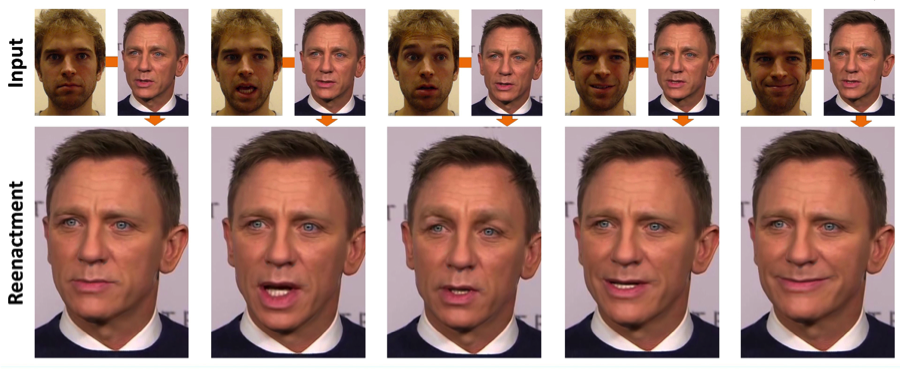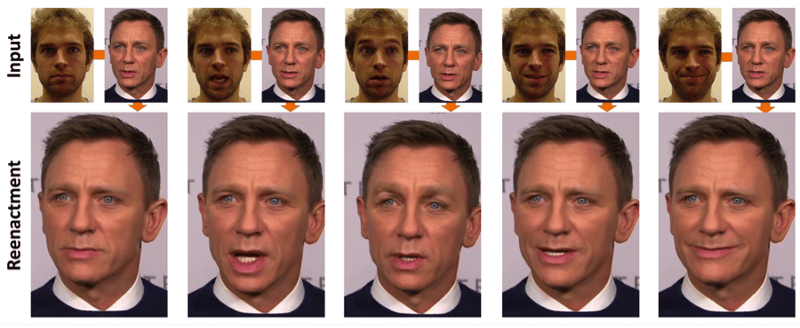
If you think this election is insane, wait until 2020.
I want you to imagine how, in four years' time, technologies like Artificial Intelligence, machine learning, smart sensors and networks will accelerate.
Political campaigns are about to get hyper-personalized, thanks to advances in a few exponential technologies.
Imagine a candidate who now knows everything about you, who can reach you wherever you happen to be looking, and who can use info scraped from social media (and intuited by machine learning algorithms) to speak directly to you and your interests.
Here's what future election campaign marketing might feel like…
P.S. Send any tips to our team by clicking here, and send your friends and family to this link to subscribe to Abundance Insider.
Key Trends: In Just 4 Years…
1. Social media will have continued to explode.
In 2016, 78% of Americans have a social media profile. This year, 162 million Americans (over 50%) will log onto Facebook at least once a month.
In four years, these numbers will continue to explode. And so will a campaign's knowledge about you, what you care about and who you are.
Artificial Intelligence agents built by political campaigns will stalk your every move, scraping your social graph, reading your tweets and posts, analyzing your Instagram photos… mining your publicly available data to know more about you than ever before.
The single most important factor influencing your voting decision is your social network… so you can bet that political campaigns will be mining this data to find your top social influencers, what stories you're reading, and subjects that resonate with you.
2. Machine Learning and Artificial Intelligence will move forward 10x.
This year, we saw chatbots emerge in a big way. Since they opened the platform, Facebook Messenger now has 11,000+ chatbots, where an algorithm communicates with end users over Messenger as if it were a person. These are clunky at best.
By 2020, things are going to get much more sophisticated. Voice interfaces like Siri, Cortana, Google and Alexa are going to get much, much better.
You'll be able to carry out in-depth conversations with these AIs, and thanks to machine learning and the exponentially increasing amount of data about yourself that you're generating each year, these Artificial Intelligence will learn how to optimally communicate with you in such a personalized fashion that you'd swear it's your closest friend. They'll incorporate your ideologies, preferences, choice linguistic styles and slang, favorite topics and content, and even inside jokes into the conversation.
It's going to get personal…
3. 50 billion devices & 1 trillion sensors will come online.
IoT is exploding exponentially, and we'll see billions of devices connected to the Web and interacting with you on a daily basis.
Your cars, your Augmented Reality glasses, your computing devices, your biometric sensors, your home, your office, your appliances, restaurants, grocery stores, airports, planes and everything in between will be connected and communicating with each other.
Are voters who exercise frequently better Republican donors? An Artificial Intelligence can pick up on your movements, track your phone, and perhaps even monitor your heart rate.
Ubiquitous cameras throughout our environment will be imaging everything, everywhere. Imagine passing by a sidewalk display where the cameras and machine learning protocols pick up your face, know exactly who you are and feed you a personalized advertisement.
Spooky? Perhaps, but this kind of hyper-focused, targeted advertising is on its way.
4. Digital avatars will become photorealistic and fully programmable.
In four years, we'll be able to fully manipulate photorealistic avatars of candidates to say, well… anything.
This year, researchers out of Stanford were able to take videos of humans and, in real-time, manipulate their faces to match expressions of another person in the lab. Scary.

(Face2Face: Real-time Face Capture and Reenactment of RGB Videos)
By the next election, this is going to get even better. We'll be able to render any face to do and say anything, and you won't be able to tell it's fake.
Add this to advances in algorithmic audio dubbing, and we'll be able to type text into a program which will then spit it out in the exact voice of the presidential candidate.
5. Micropayments, Smart Objects, and Blockchain applications will go mainstream.
In four years, it's going to get easier and easier to pay for things. Mobile payments in 2016 will amount to over $600 billion. In 2020, this will likely be over $1 trillion.
More than that, we'll see a proliferation of apps that use "micro-payments" -- small payments, from a fraction of a cent to just a few dollars, built on digital protocols like the Blockchain.
You'll be able to "flick" digital objects that contain value -- like a Digital Political Sticker (which you bought for $0.05) with your face on it -- as endorsements to candidates from your phone to their smart billboards.
And while I doubt the regulatory environment will move quickly enough for the next election, eventually Blockchain will allow us to vote in the election from our own devices.
Hyper-personalized Political Ads: What it will feel like…
The bottom line is that the 2020 election is going to get very personal.
Imagine candidate advertisements that are so personalized that they are scary in their accuracy and timeliness.
For Example: Imagine I'm walking down the street to my local coffee shop, and a photorealistic avatar of the presidential candidate on the bus stop advertisement I pass turns to me and says:
"Hi Peter, I'm running for president. I know you have two 5-year old boys going to kindergarten at XYZ School. Do you know that my policy means that we'll be cutting tuition in half for you? That means you'll immediately save $10,000 if you vote for me…"
If you pause and listen, the candidate's avatar may continue: "I also noticed that you care a lot about science, technology, and space exploration – I do too, and I'm planning on increasing NASA's budget by 20% next year. Let's go to Mars!"
"I'd really appreciate your vote. Every vote and every dollar counts. Do you mind flicking me a $1 sticker to show your support?"
Fun times ahead.
Also read: TOP 50 MOON SHOTS (2000 - 2020)
WHAT IS ABUNDANCE INSIDER?
This email is a briefing of the week's most compelling, abundance-enabling tech developments, curated by Marissa Brassfield in preparation for Abundance 360. Read more about A360 below.
WANT MORE CONVERSATIONS LIKE THIS? - JOIN ME
At Abundance 360, Peter's 360-person executive mastermind, we teach the metatrends, implications and unfair advantages for entrepreneurs enabled by breakthroughs like those featured above. We're looking for CEOs and entrepreneurs who want to change the world. The program is highly selective. Apply now for Abundance360 Summit if you'd like to develop an Abundance mindset.
Know someone who would benefit from getting Abundance Insider? Send them to this link to sign up.
P.S. I've just released a podcast with my dear friend Dan Sullivan called Exponential Wisdom. Our conversations focus on the exponential technologies creating abundance, the human-technology collaboration, and entrepreneurship. Head here to listen and subscribe.






